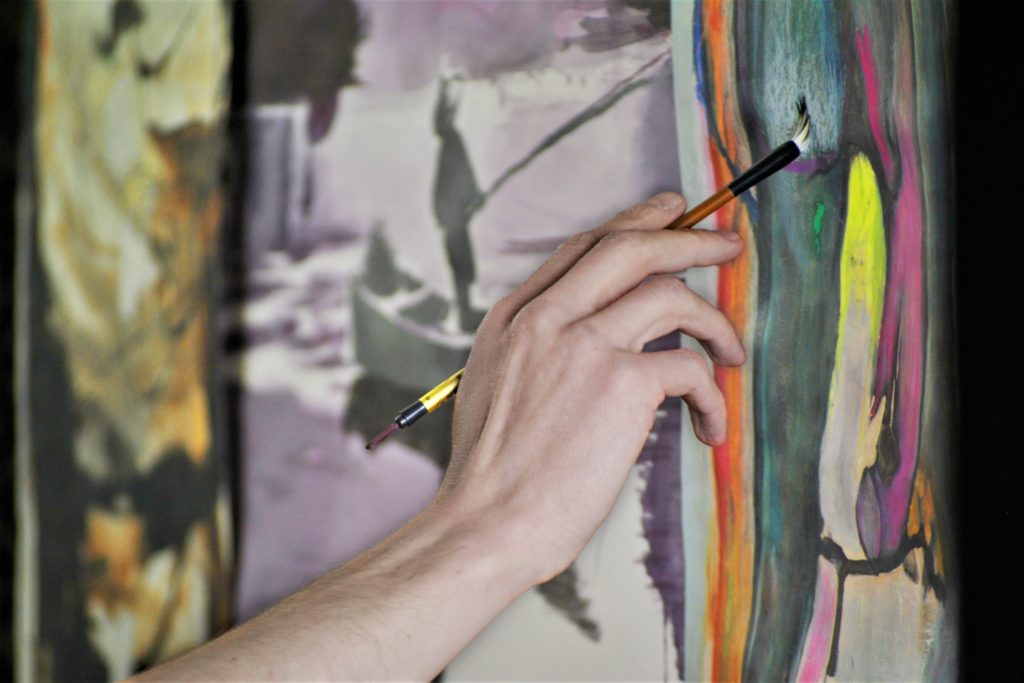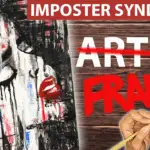Find your creative art style using 5 simple tips that can help propel your art and boost your self-confidence
As you find yourself knee-deep in your creative journey, creating paintings and learning new techniques, you will (or already have) probably stumbled upon this one perplexing question….how can I be original and make art that is my own style and not a copy-version of another artist?
I know I asked myself this question quite a few times after completing another tutorial or copying another fresh set of cartoons from my favorite shows. When can I stop copying and start actually making something original that is purely me?
Pin it for later! ⤵

*and as a side-note, when I say “copy”, I am simply referring to copying as a learning tool and resource, not to use as my own work or resell. That would be dumb, unethical, and no-bueno.
A quick answer to this question would be to do five things, including:
- Get back to the basics
- Do what the masters do
- Experiment and play
- Follow your obsession
- Embrace the mistakes
Finding your own style as an artist can definitely feel like a challenge, especially since you want to be fresh, original, and mind-blowing with your work. And as with many things in art (and in life), the answer isn’t always cut and dry.

….but there is a process and a method to acquiring your own original art style, and it requires various development steps on your behalf. Watch the video below or keep on reading to dive deeper into the steps to finding your own unique voice with your art.
1. Get Back to Basics
When it comes to finding your art style, you first need to understand the art basics – aka, the rules and fundamentals like color theory, composition, figure drawing, painting techniques, etc.; once you have a good understanding of the rules, you can then play and bend those rules.

Many creatives have done this very thing in their early periods of learning – like the poet e.e. cummings, who was notorious for his intentional grammatical “errors” in his written work.
He would make words like “if”, “am”, and “because” into nouns or even invent new words, all in an attempt to convey a certain message to his readers.
His avant-garde style was considered such because of his intrinsic understanding of the English language and decision to twist and play with it to his whim.
This was what made e.e.cummings original and memorable.
Seriously, read some of his work. You’ll get my drift.
I would recommend exploring fundamental concepts related to what you are interested in with your work – aka, explore acrylic painting fundamentals first to get a grasp on what you should be looking out for.
What acrylic painting fundamentals should I learn?
I get asked this question a lot, so I’ll just put this out there for all your beginners looking to learn and get back to basics. Of course, there are many varieties of courses that may teach one or more of these things at once. So, I’ll just list out key concepts you should learn to help you better grasp the fundamentals of acrylic painting.
- Color theory
- Art composition
- Acrylic Painting 101 (what it is, how to manipulate the medium, etc.)
- Shadows & Highlights
Some great places to learn include the following:
- Libraries (seriously, check out some art books from the library on a medium you are interested in. You will find lots and lots of useful information within the pages)
- Youtube (there are lots and lots of free tutorials available on Youtube, especially by yours truly, which you can check out here; this is a great way to get your feet wet and develop some confidence)
- Online Course Platforms (Investing in yourself and in improving your skills is valuable and a great way to develop your art skills quickly with less frustration and churn – sites like Udemy and Skillshare has tons of art education course as well as individual artists who teach their own courses (like I do!). If you want to check out some of my painting fundamentals courses, be sure to visit my website here or get started with my free acrylic artist’s toolkit guide.
- Buy Instructional Books (places like Amazon or Barnes and Noble are fantastic options if you want to invest in your art education – a concept I always highly recommend!)
Use any or all of these resources as a way to immerse yourself in the fundamental principles….
and then…
2. Do what the Masters Do
When you are just learning, especially if you’re brand new to painting or drawing, following what others are doing as practice is a great step to take. My suggestion would be to copy what other artists are doing – and do it with a lot of artists.
Doing this helps you figure out concepts and practice different techniques you may have otherwise never would have thought to try. Over time, the more you practice using those concepts and internalizing them, the sooner you start to develop a technique that works best for you -aka your “style”.
For me, I did tons of drawings and paintings (almost ad-nauseum) of different Disney characters, anime characters, and even replicated various paintings my family had hung up on the walls. Whatever I saw that piqued my interest, I would attempt to copy it, over and over again and paying attention to the details and taking note of where I struggled so I could improve it.
In some ways, your style is a developed, almost “Frankenstein” mish-mash of everything you learn as you progress as an artist…except your Frankenstein is your unique perspective….and doesn’t involve a sad, horrible ending.

3. Experiment and Play
There is also such a thing as doing too much research and not enough “doing”, which is lovingly termed as “analysis paralysis”.
When learning art, a large part of it involves you actually doing the art – putting brush to canvas, mixing paint, making mistakes, figuring things out. By actively learning, you are building an intrinsic understanding and cementing the skills you can use for life.
So, do several art projects.
Use paper. Use cheap materials. Anything to help remove barriers to your learning experience.
And most importantly, keep the objective focus as one of “learning” and not making a masterpiece right away.
Trust me, you’ll have plenty of time for making eye-popping masterpieces; right now, focus on learning and grasping the key concepts first without putting all that undue pressure on yourself. Seriously, it isn’t worth the time.

4. Follow your obsessions
Art is your unique form of expression and communication. If you are really into a certain topic, method, technique, stretch the living crap out of it.
For example, if you absolutely love grassy landscapes, lean into it; take your canvas outside, observe it in nature, and start creating.
Hell, create twelve different versions of grassy landscapes to your heart’s content. I guarantee you will start to develop an eye for landscapes, what to look out for, and best of all, it’ll reflect your style and what feels good for you.

5. Your mistakes will guide you in the right direction
If you know anything about me, I always praise making mistakes.
It is the single most effective learning tool we can use to understand where we fall short to our goals, revise our strategy and try again. It’s a normal part of the process.
Make as many mistakes as you can as you navigate the path of finding your unique art voice. Try different techniques, step outside of your comfort zone with a new medium, try doing something you suck at. You will be learning something new every time you do this.
So, as you are progressing with your painting, remember to keep these tips in mind. It’s ok to struggle; it’s ok to fail and make art that you are not always proud of. It’s totally normal and a natural point in your journey to creating something unique to you and your style. Just be patient and love yourself in the learning process.



